Bhutan, a Buddhist kingdom on the Himalayas’ eastern edge, is known for its monasteries, fortresses (or dzongs), and dramatic landscapes that range from subtropical plains to steep mountains and valleys. In the High Himalayas, peaks such as 7,326m Jomolhari are popular trekking destinations. Paro Taktsang monastery (also known as Tiger’s Nest) clings to cliffs above the forested Paro Valley.
The country’s landscape ranges from lush subtropical plains in the south to the sub-alpine Himalayan mountains in the north, where there are peaks above 7,000 meters (23,000 ft). Gangkhar Puensum is the highest peak in Bhutan, and it may also be the highest unclimbed mountain in the world. The wildlife of Bhutan is notable for its diversity.
Overview
A great example of a traditional way of living in this modern day is Bhutan with gross happiness. If you wish to explore spiritual and simple life in the 21st century Bhutan is one of the countries. This Himalayan kingdom journey will be a life-changing experience.
Itinerary
Day 01: Arrive at Paro, drive to Thimphu (D)
Day 02: Thimphu (B/L/D) Full day sightseeing in Thimphu
DAY 03: THIMPHU TO GANGTEY (B, L, D)
DAY 04: GANTEY TO TRONGSA (B, L, D)
DAY 05: TRONGSA TO PUNAKHA (B, L, D)
DAY 06: PUNAKHA/ WANGDUE TO PARO (B, L, D)
DAY 07: IN PARO (B, L, D)
Day 08: Depart Paro (B)
Itinerary
Arrive at Paro Airport and then drive to the capital city Thimphu. Altitude: 2320 m. above sea level. (1 hour 30 minutes drive)
The flight into the Himalayas reveals scenic and breathtaking views of the Himalayan Mountains of the world. If weather permits you will be able to see Mt Everest (8848 m. and other Himalayan mountain ranges. After checking into the hotel later visit, Your representative from the agency will greet you on arrival and drive you to the capital city, Thimphu. On the way to Thimphu visit, Tamchhog Lhakhang which is located on the opposite side of the river. This is a temple built by Thang Thong Gyalpo of Tibet, who was responsible for building numerous iron bridges throughout Bhutan. Kuenselcholing View Point: A place from where you can get a good overview of the Thimphu valley is the Buddha point (Kuensel Phodrang). It is again a short drive from the town. You can pay your obeisance and offer prayers to the Buddha, the largest statue in the country and then walk around and take a glimpse of the valley. Memorial Chorten: This particular Chorten was constructed in 1974 as a memorial for the third King of the country, King Jigme Dorji Wangchuck, who is widely regarded as the father of modern Bhutan. Tashichho Dzong: The name means – Means Fortress of Glorious Religion. It was built in 1641 by Zhabdrung Ngawang Namgyel. It houses the secretariat building, the throne room the office of the king, and the central monk body. Later relax for the day and stroll around the city. Overnight in Thimphu.
The morning takes a hike to Cheri Monastery (which Includes Dodina and Jigme Dorji Wildlife Sanctuary): Hike of about 1hrs (to and from) leads to Cheri Goemba (Cheri Dorji Dhen). Zhabdrung Ngawang Namgyal built this monastery in 1620 and established the first monk body here. A chance to spot birds such as Mrs. Gould’s Sunbird, Yellow-browed Tit, Yellow-rumped Honeyguide, Long-billed Thrush, Ultramarine Flycatcher. Paper factory: The handmade paper making in Bhutan stemmed from the age-old tradition that originated in the 8th century of Bhutanese history. The handmade paper constitutes a valuable National heritage of Bhutanese cultural identity and is preserved through all the ages. The Traditional paper is recognized and held in high esteem both at home and in the outside world.
The weekend market: Held every Friday, Saturday, and Sunday, the people crowd the stalls every day, dressed in full color, and gathered to meet and barter, much like the street markets in London!Bhutan Craft bazaar: The private stalls had a variety of high-end quality products from places across the country such as wood-carved national symbols, bags and western wears with a touch of traditional designs, wooden and clay utensils, Bangchung, Dhapa, key hangers of jewelry boxes, bookmarks and handmade packing papers (Deysho) in different patterns, antique items, etc. The stalls have a distinctly rich outlook with fine tones of elegance and a warm and inviting atmosphere. The craft bazaar is also exemplary of how bamboo can be used to construct houses in the country. Later you can stroll around the city. Overnight in Thimphu.
Altitude: 2800 m.above sea level (5 hours drive)
Morning driving towards Gangtey, we come across a pass known as Dochula (3140 m. from where a beautiful panoramic view of the Himalayan mountain range can be seen, especially on clear winter days. The beauty of this place is further enhanced by the Druk Wangyal Chortens- 108 stupas built by the eldest Queen, Her Majesty Ashi Dorji Wangmo Wangchuck. In the mountains east of Wangdue Phodrang lies the beautiful Phobjikha valley, on the slopes of which is situated the great monastery of Gangtey, established in the 17th century. The village of Phobjikha lies a few km. down from the monastery, on the valley floor. This quiet, remote valley is the winter home of black-necked cranes, which migrate from the arid plains of Tibet in the north, to pass the winter months in a milder climate. Overnight in Gangtey.
Altitude: 2200m/ 7260ft above sea level. (5 hours drive). Morning you will hike across Gangtey Nature Trail: (Duration: Half day: two hours at a quicker pace): This is one of the most beautiful and shortest of the existing nature trail. On this trail you have the opportunity to visit the magnificent Goemba (Monastery), it also leads to a sloping area of green grass, flanked by pine trees on either side. You will even come across some villages, rivers, and crane roosting grounds. Trongsa Museum: Situated strategically above the Trongsa dzong, the Ta Dzong served as the watchtower for centuries. It was built by Choeje Minjur Tempa in 1652. The museum is equipped with state-of-the-art technology and includes a media room where visitors can watch a documentary program on the history of the monarchy. The Ta Dzong was renovated and converted into a museum at a cost of Nu. 97 million with funds from the Austrian government. The museum is dedicated to the coronation and centenary celebrations. Overnight in Trongsa.
Altitude: 1350m/ 4455ft above sea level. (6 hours drive).
Morning drive to Punakha visits Punakha Dzong (fortress): Built in 1637 by Zhabdrung which is remarkably located between the rivers of Mo (Female) Chu (river) and Pho (Male) Chu. Until the time of the second king, it served as a seat of the king. Hike to Chimi Lhakhang(Temple of fertility): This Temple was built by lam Drukpa Kuenley (The Divine Madman) in 1499. It is about thirty minutes hike across fields from the road –Wooden phalluses are often found hanging in the four corners of the houses and also phalluses are painted on the walls of houses. It is the common belief that this helps in driving away evil spirits. (30 minutes hike to and fro, gentle steep, good footpath across the valleys and villages).Overnight in Punakha/Wangdue.
Morning drive to Paro and visit, Rimpung Dzong: The Bhutanese Dzongs are huge architectural structures constructed for a variety of functions throughout the country, from administrative buildings to monasteries and temples, yet they are carefully and thoughtfully designed and are strikingly beautiful. The Rimpung Dzong, known as the “fortress of the heap of jewels” in the picturesque setting of the Paro valley, is, of course, no exception, built in the time of the dynamic spiritual and political leader Zhabdrung in 1644. Once a year, as part of the Tsechu festival, one of the oldest Thongdol (gigantic scroll paintings) is ceremonially unfurled here.
Kichu Lhakhang(Monastery): It is one of the two most sacred and oldest temples in Bhutan. It was built in the 7th century by Tibetan King Songtsen Gampo.Drugyel dzong: This ruined dzong is of historical importance. It was built in 1649 by Zhabdrung to commemorate the victory of the Drukpas over the Tibetan invasion in 1644. The Bhutanese still vividly recall and celebrate this victory which was tremendously important to the history of the area. On a clear day (7326m/ 24176ft), you have a fascinating view of the white-domed peak of sacred Jhomolhari (Mountain of Goddess).Overnight in Paro.
Morning hike to Taktshang Monastery (Tiger’s nest): This is Bhutan’s most recognizable cultural icon perched 800m/2640ft up a seemingly sheer cliff. Although it was tragically and mysteriously consumed by fire in April 1998 it has now been restored to its former glory. It is believed that in the 8th century, the great tantric master Guru Rimpoche/ Padmasambhava (2nd Buddha) flew on the back of a tigress to the site where the monastery now stands. (Five hours hike to and fro, some gentle and some steep hikes, some stony footpaths, and some good ones) If you ride a horse upward it will cost an extra US$25 per person.
Visit Farmhouse: Picturesque farmhouses dot the valley amongst fields and hillsides. We welcome you to enjoy the hospitality of the Paro farmers. Thrill yourself as the farmers welcome you to their homes with genuine smiles. The two to three-storied Bhutanese farm houses are handsome, with colorfully decorated outer walls and lintels, and are traditionally built. A visit to a farmhouse gives an interesting glimpse into the lifestyle of a farming family. (If you take a hot stone bath in the farmhouse it will cost an extra US$25 per person.)Later stroll around the town and see how locals live. Overnight in Paro.
Early breakfast at the hotel and then drive to the airport. Your escort will assist you with exit formalities and bid you farewell.
Cost Includes:
- Private transportation.
- All necessary travel permits.
- English-speaking local guide.
- Accommodation on a single/twin room basis.
- Sightseeing and monastery entrance fees are as per the itinerary.
- Meal plan: Full Board Basis.
Cost Excludes:
- Insurance of any kind.
- Flight from Kathmandu to Para and Kathmandu (US 505$ Subject to Change).
- Visa Fee US 50$.
- Additional costs due to natural calamity and unforeseen circumstances.
- Personal expenses such as drinks, guide tips &, etc.


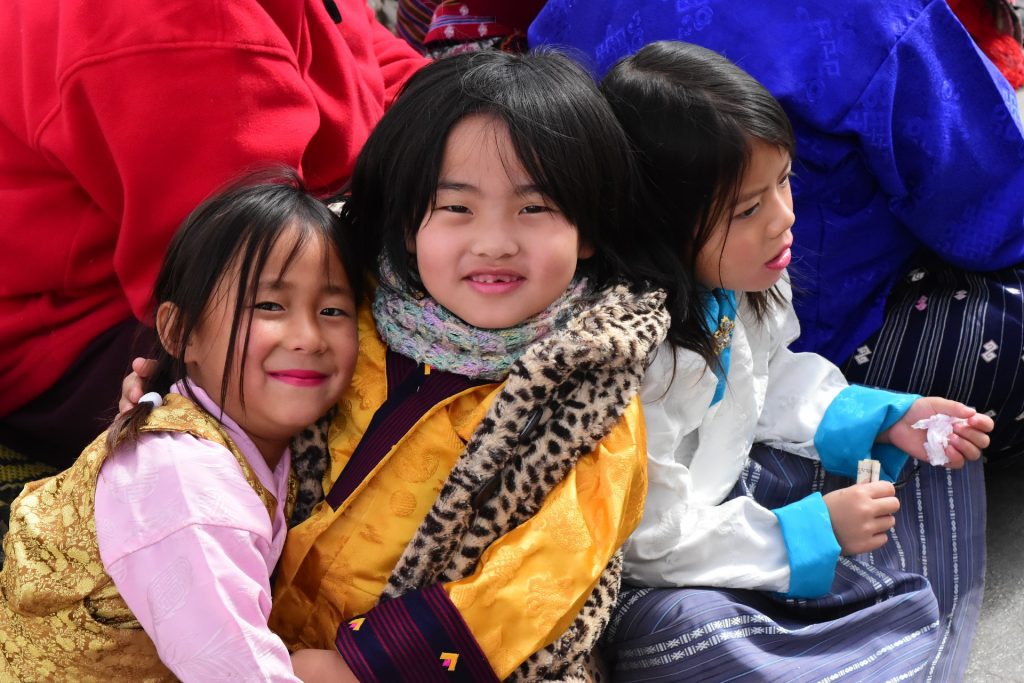
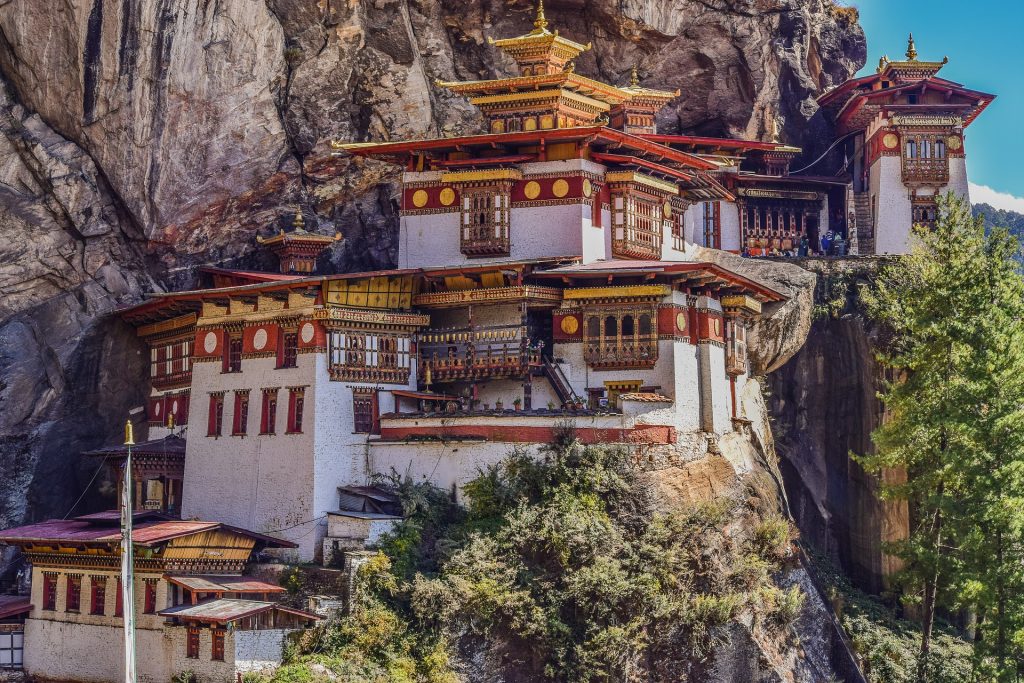

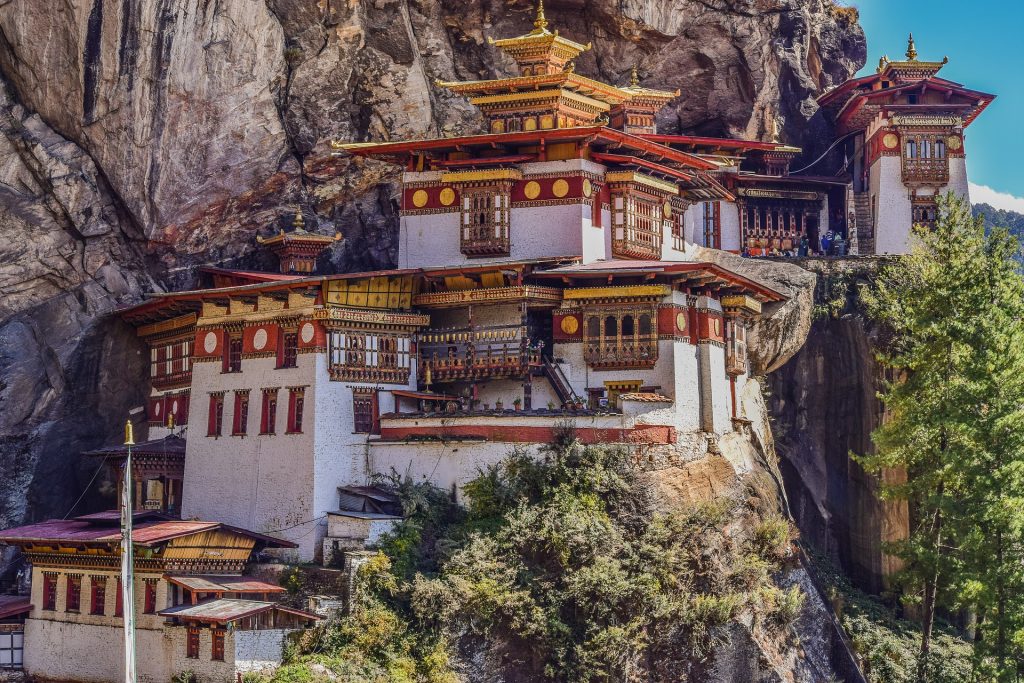




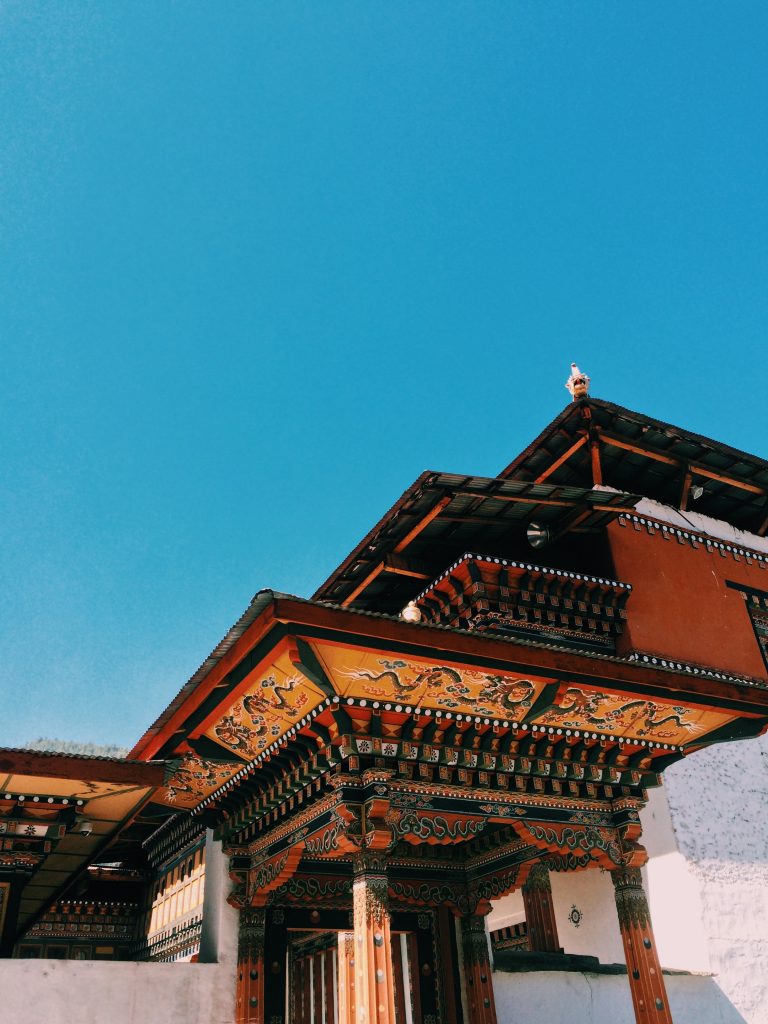


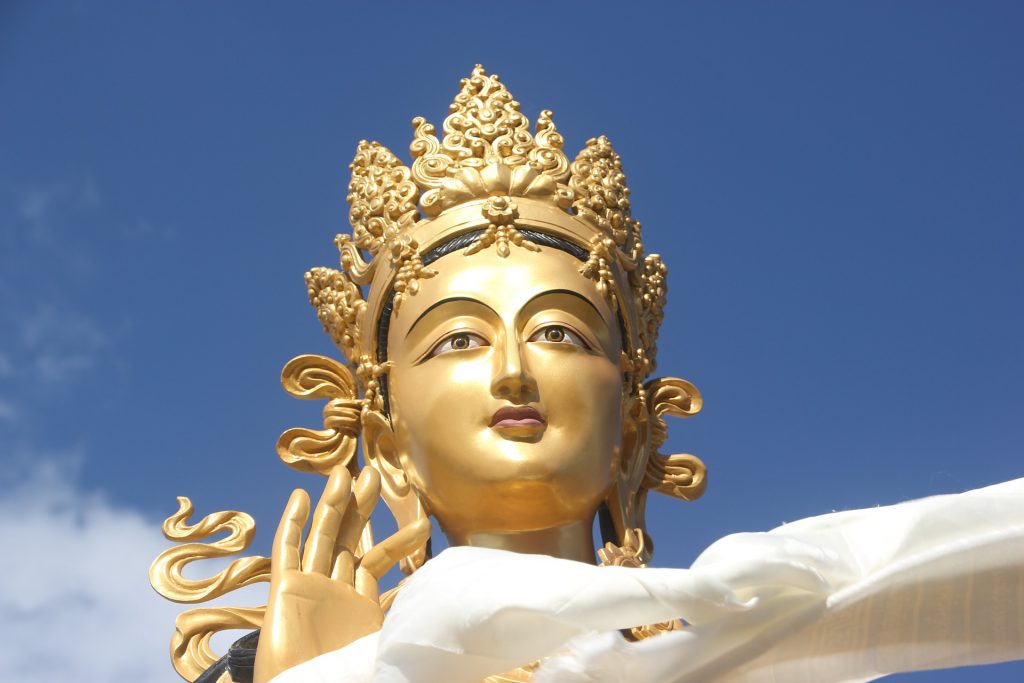
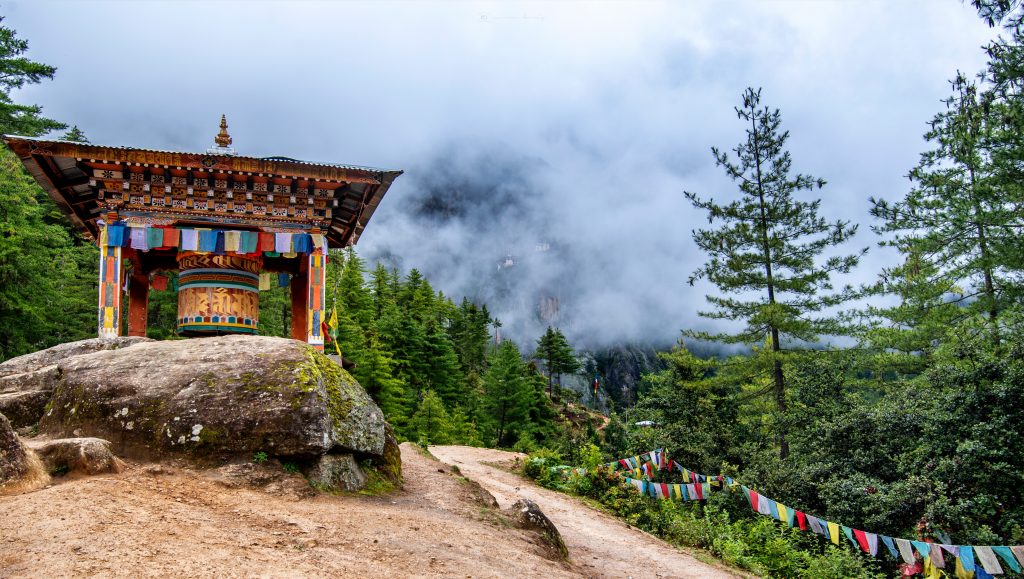
Write a Review